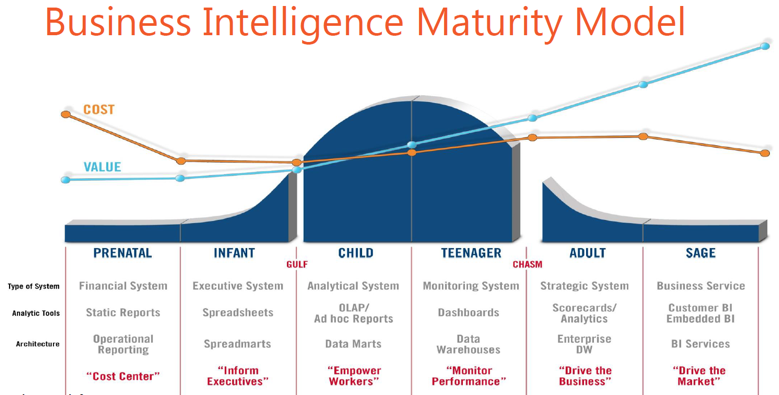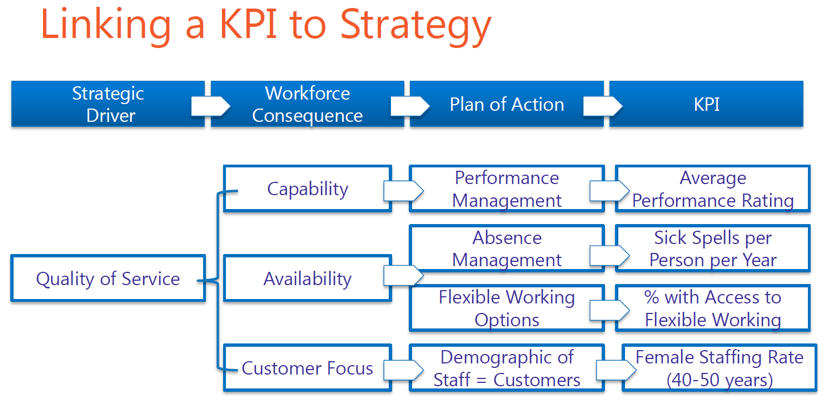Knowledge is power, but only to the extent that it is actionable. Billions of dollars are invested every year in BI and analytics, but what is the actual ROI that organizations receive from this investment? Few would argue that investing in business analytics is a bad idea, but with a 26% user adoption rate for BI solutions (according to Gartner Group industry assessment), organizations can’t be getting all that they paid for. So what is going on here?
My theory is that there are two important dynamics that affect the ROI from BI solutions: 1.) Organizational Maturity, and 2.) Ability to Act and Affect Change.
Organizational Maturity – I recently attended the 2015 PASS Business Analytics Conference and I sat in on a strategy session presented by Rick Grantham (Thanks, Rick!). In his presentation Rick referenced the Data Warehouse Institute’s BI Maturity Model (below). Full disclosure here, I tend to be somewhat of a skeptic when it comes to maturity models (remember CMM?). That said, I have seen time and again how well the BI Maturity Model fits with what we observe with our clients.
I find this model to be a useful representation of how organizations progress along the continuum of increasing capabilities. From this model one can spin a lot of stories about the challenges we all experience building business analytics capabilities. A simple truth I find is that if an organization is misaligned (i.e., user needs are not in sync with what IT has implemented) the result will be low user adoption and therefore low ROI. A common example of this is where IT has implemented a data warehouse complete with reporting, dashboards and KPIs, but users are still living in Excel and operational system reporting.
Note that if this mismatch is not resolved, the BI initiative will likely not survive.
Ability to Act and Affect Change – Certainly the first priority for business analytics is to provide visibility of business results by exposing the data in meaningful ways. However, mere visibility does nothing to change what happens in the business going forward. This is where it gets interesting. Are we asking the right questions? Are we producing the right KPIs and measurements? How do we decide on priorities and how do our priorities align with our key strategies?
I’m a proponent of the top-down approach where KPI’s are derived from Strategies, Consequences and Action Plans. Borrowing again from Rick Grantham’s PASS presentation, the illustration below is a good rendition of the top-down approach:
This approach defines the course of action (Action Plan) as a forethought, based on the strategy and consequences. In this context, KPI’s are the triggers for action and each KPI is linked to a plan of action.
When a KPI is indicating a need for action, organizations must have the capabilities (through reporting and analytics) to drill into the details to gain deeper understanding. The action-ability (e.g., process changes) requires knowledge of root causes for the issue. This will likely require both qualitative and quantitative analysis.
I’ll take us back to my initial premise – ROI from Business Analytics is maximized when user capabilities are aligned with system capabilities. Low user adoption is a key indicator of how we are doing on this front. How we achieve this alignment depends on many things, both cultural and practical. If organizations are not affecting future performance from the information they are surfacing from their business analytics efforts, it’s time to understand where the gaps exist.
For more information on BI Maturity Model, call the Business Analytics Team at CSG, 503-292-0859, send a quick email to Ron at roneg@csgpro.com., or visit: https://tdwi.org







